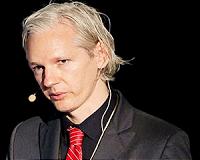| . |  |
. |
Hsinchu, Taiwan (AFP) Aug 24, 2010 For weeks after narrowly escaping two Chinese missiles, Chuang Jen-liang would wake up at night bathed in sweat, but the Taiwanese spy pilot could talk to no one about his missions. Only now, more than four decades later, is 73-year-old Chuang able to speak out about his harrowing experiences, as Taiwan is lifting the veil on one of its most closely guarded secrets of the Cold War. This brings credit to Chuang and other veterans of the 35th "Black Cats" Squadron who flew at altitudes of more than 20,000 metres (65,000 feet) to gather intelligence about the Chinese, risking their lives each time. "I doubt if I'd be so lucky if I had to go through all this again," said Chuang, who now lives in an apartment in north Taiwan's Hsinchu city. The elite Black Cats, who were operational from 1961 until 1974, flew the legendary U-2 airplane, dubbed "Dragon Lady" and a crucial intelligence tool at the time. That made the squadron a key element in the intelligence relationship between the US government and Taiwan's Nationalist rulers, who had fled the mainland in 1949 after losing a civil war to the communists. "The information they gathered was crucial for understanding the Chinese communists' military deployment, especially since spy satellites weren't available," said Taiwan's Air Force Lieutenant General Wang Mu-jung. But the information came at a steep cost. At the height of the Cold War, flying the U-2 was one of the most dangerous jobs any military man could perform. Of the 28-member Black Cat squadron, four were shot down and killed over China, while two were taken prisoner and kept incarcerated for nearly 20 years. Six lost their lives during training missions. One of the Black Cats' key areas of interest during the 1960s was China's speedily evolving nuclear programme, a source of great concern after the communist power detonated its first atomic bomb in October 1964. Fears that China was now developing a hydrogen bomb formed the backdrop to Chuang's most complicated and daring mission, codenamed "Tabasco", on May 7, 1967, over a test site at Lop Nor in the northwest. Since the area was too far away from Taiwan, Chuang took off from a US base in northern Thailand, and once over the target zone he dropped a pair of two-metre (10-foot) sensors onto the desert floor. Six weeks later, the two sensors transmitted signals to Taipei confirming that China had tested its first hydrogen bomb. In all their missions, the Black Cats were flying at altitudes too high for China's Soviet-designed MiG planes, but instead they faced the lethal menace of its surface-to-air missiles. Chiu Sung-chow, a former Black Cat, remembered steering frantically to evade missiles fired against him in the skies over northeast China's Dalian city in 1973, with split-second decisions making the difference between life and death. "If I had turned my plane either a little bit earlier or later after the missile alert went on inside my cockpit, I would have been hit," he said. Chiu's sortie over Dalian was one of the last carried out by a Black Cat over China. The year after, the United States terminated the programme in the spirit of new detente with Beijing. With tensions across the Taiwan Straits greatly reduced, and documents about the US-Taiwan cooperation in intelligence declassified, the public can finally learn more about the Black Cats. Two schools on Taiwan are named after pilots who died in the line of duty, and the defence ministry is scheduled to hold a special exhibition in October to honour the pilots. This is in recognition of their contribution not only in the field of military intelligence, but also to relations with the United States. "No doubt, the secretive missions of the Black Cat Squadron have helped promote military ties with Washington," Taiwanese aviation historian Clarence J. Fu argued. "The United States was rather reliant on Taiwan when it comes to spying on the mainland," said Fu, co-author of a book on the subject.
Share This Article With Planet Earth
Related Links Cyberwar - Internet Security News - Systems and Policy Issues
 WikiLeaks founder, an enigma set on revealing secrets
WikiLeaks founder, an enigma set on revealing secretsStockholm (AFP) Aug 21, 2010 WikiLeaks founder Julian Assange, against whom Sweden cancelled a warrant on suspicion of rape Saturday, has uncovered some of the world's deepest secrets but keeps his own life shrouded in mystery. The swiftly withdrawn allegations against Assange came as the lanky former computer hacker was locked in a dispute with the Pentagon over the leaking of secret military documents on the Afghan wa ... read more |
|
| The content herein, unless otherwise known to be public domain, are Copyright 1995-2010 - SpaceDaily. AFP and UPI Wire Stories are copyright Agence France-Presse and United Press International. ESA Portal Reports are copyright European Space Agency. All NASA sourced material is public domain. Additional copyrights may apply in whole or part to other bona fide parties. Advertising does not imply endorsement,agreement or approval of any opinions, statements or information provided by SpaceDaily on any Web page published or hosted by SpaceDaily. Privacy Statement |